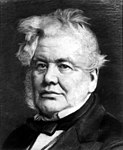
Back যুক্তরাজ্যের সাধারণ নির্বাচন, ১৮৭৪ Bengali/Bangla Etholiad cyffredinol y Deyrnas Unedig, 1874 Welsh Britische Unterhauswahl 1874 German Elecciones generales del Reino Unido de 1874 Spanish Élections générales britanniques de 1874 French הבחירות הכלליות בבריטניה 1874 HE Elezioni generali nel Regno Unito del 1874 Italian 1874년 영국 총선 Korean Парламентские выборы в Великобритании (1874) Russian Парламентські вибори у Великій Британії 1874 Ukrainian
| |||||||||||||||||||||||||||||||||||||||||||||||||
All 652 seats in the House of Commons 327 seats needed for a majority | |||||||||||||||||||||||||||||||||||||||||||||||||
|---|---|---|---|---|---|---|---|---|---|---|---|---|---|---|---|---|---|---|---|---|---|---|---|---|---|---|---|---|---|---|---|---|---|---|---|---|---|---|---|---|---|---|---|---|---|---|---|---|---|
| |||||||||||||||||||||||||||||||||||||||||||||||||
 Colours denote the winning party | |||||||||||||||||||||||||||||||||||||||||||||||||
 Composition of the House of Commons after the election | |||||||||||||||||||||||||||||||||||||||||||||||||
| |||||||||||||||||||||||||||||||||||||||||||||||||
The 1874 United Kingdom general election saw the incumbent Liberals, led by William Gladstone, lose decisively, even though their party won a majority of the votes cast.[1] Benjamin Disraeli's Conservatives won the majority of seats in the House of Commons, largely because they won a number of uncontested seats. It was the first Conservative victory in a general election since 1841. Gladstone's decision to call an election surprised his colleagues, for they were aware of large sectors of discontent in their coalition. For example, the nonconformists were upset with education policies; many working-class people disliked the new trade union laws and the restrictions on drinking. The Conservatives were making gains in the middle-class, Gladstone wanted to abolish the income tax, but failed to carry his own cabinet. The result was a disaster for the Liberals, who went from 387 MPs to only 242. Conservatives jumped from 271 to 350. Gladstone himself noted: "We have been swept away in a torrent of gin and beer".[2]
The election saw the Irish of the Home Rule League become a significant third party in Parliament, with 60 of 101 of the seats for Ireland. This was the first UK election to use a secret ballot following the 1872 Secret Ballot Act. The Irish Nationalist gains could well be attributed to the effects of the Secret Ballot Act, as tenants faced less of a threat of eviction if they voted against the wishes of their landlords.[citation needed] Also in this election, the first two working-class MPs were elected: Alexander MacDonald and Thomas Burt, both members of the Miners' Union, were elected as Liberal-Labour (Lib–Lab) MPs in Stafford and Morpeth, respectively.[3] The 1867 Reform Act eroded the legislative power of the rural gentry. The 1874 election, especially in Ireland, saw great landowners losing their county seats to tenant farmers.[4]
This is the only time, since the introduction of the secret ballot, that a UK party has been defeated despite receiving an absolute majority of the popular vote. This was primarily because over 100 Conservative candidates were elected unopposed. This meant no votes were cast in those 100 places where the Conservative candidates were anticipated to be popular; in the seats where Liberal candidates did stand, they polled a high proportion of the vote on average.
The election saw 652 MPs elected, six fewer than at the previous election. Following allegations of corruption, the Conservative-held constituencies of Beverley and Sligo Borough, and the Liberal-held constituencies of Bridgwater and Cashel, had been abolished.
Cite error: There are <ref group=lower-alpha> tags or {{efn}} templates on this page, but the references will not show without a {{reflist|group=lower-alpha}} template or {{notelist}} template (see the help page).
- ^ William Henry Maehl, "Gladstone, the Liberals, and the Election of 1874", Historical Research (1963), 36#93: 53–69.
- ^ (Roberts 2001, p. 332).
- ^ Whitfield, Bob (2001). The Extension of the Franchise, 1832-1931. Heinemann. p. 240. ISBN 9780435327170.
- ^ David F. Krein, "The Great Landowners in the House of Commons, 1833–85." Parliamentary History 32.3 (2013): 460-476.


